TWM Blog

Latency Trap How Cloud Trading Limits Precision in 2025
Introduction
In the world of modern finance, milliseconds matter. For traders running algorithmic trading strategies, even a tiny delay between signal and execution can mean the difference between profit and loss. And that’s where the cloud trading latency problem begins — invisible, yet powerful enough to destroy consistency for even the smartest AI trading systems.
While browser-based platforms advertise convenience, professionals know that speed, precision, and data integrity are what truly define performance.
That’s why more traders in 2025 are shifting toward low latency trading platforms that prioritize local execution — like the professional desktop environment offered by TWM.
Platforms like TWM are built for those who prioritize precision and reliability — a mark of any best professional trading software used by serious traders worldwide.
⚙️ The Real Cost of Cloud Latency
Every time your trading signal travels from your computer to a cloud server and back, microseconds turn into milliseconds — and in algorithmic trading precision, milliseconds decide the outcome.
Here’s what happens under the hood:
- Cloud servers queue requests during market spikes.
- Delays occur due to cloud latency and data congestion.
- Orders execute late, creating slippage and price mismatches.
This delay doesn’t just reduce profits; it changes the math of your algorithmic model.
When you’re using ai quantitative trading or machine learning for algorithmic trading, the smallest lag creates compounding errors — a feedback loop of inaccuracy.
With true local execution, desktop trading software like TWM gives traders control over latency and performance — something the cloud can never match.
💻 Why Offline Platforms Offer True Precision
Unlike cloud systems, desktop-based trading environments like TWM process data locally.
This means no external request delay, no throttled bandwidth, and no queue times — just real-time trading execution at hardware speed.
By removing cloud dependencies, traders gain:
✅ Consistent data flow for backtesting and live execution
✅ Stable environment for AI-driven or automated trading strategies
✅ True order synchronization without server-side delay
Professionals running forex algorithmic trading or crypto AI systems depend on local execution for accurate decision models.
That’s why TWM’s offline trading platform has become a preferred choice for traders who value performance over convenience.
The QQE Indicator extension remains one of the most precise momentum tools in the TWM ecosystem, offering smoother signal calculation and reduced lag during volatile sessions.
🧠 Algorithmic Trading Precision — Why It Matters in 2025
Precision isn’t just about speed — it’s about integrity.
In algorithmic trading software, even a fraction of delay or data loss skews performance metrics.
When traders test strategies in the cloud, the tick data may already be outdated by the time the system executes a trade.
In contrast, a low latency trading platform ensures that algorithms interact with real-time data.
It’s not an overstatement — this is the difference between “seeing” the market and “reacting” to it.
Inside TWM, traders can test, simulate, and execute directly from their system — without waiting for API refreshes or network requests.
That’s what makes it ideal for AI trading platforms, day trading robots, and even automated arbitrage systems that depend on speed accuracy.
Extensions like the Volatility Switch help traders detect pressure shifts earlier, improving timing accuracy in low latency environments.
🔍 The Psychology Behind Speed
Fast systems aren’t just about hardware.
They shape how traders think.
When you use slow cloud trading platforms, hesitation builds. You second-guess your setups.
But with an optimized, low latency trading platform, traders act confidently — because the numbers and visuals sync in real time.
This confidence directly impacts algorithmic trading strategies, helping you stay consistent in execution and logic.
That’s why the future of precision lies in platforms that combine AI trading systems with local computational speed — not outsourced cloud servers.
🧩 AI, Automation, and the Future of Quant Trading
AI is rewriting trading logic — but it still depends on the reliability of its data environment.
Without stable infrastructure, even ai trading systems and automated trading Framework misfire.
Platforms like TWM integrate AI-driven modules directly into the desktop layer, allowing traders to build smarter, self-learning models with instant access to historical and live market data.
This alignment of AI quantitative trading and desktop computation defines what’s next — intelligent precision without compromise.
❓ FAQs — The Latency Question in Trading
Q1. What is cloud trading latency?
It’s the time delay between sending an order and executing it on a cloud server. These milliseconds often cause slippage and inconsistent fills.
Q2. How does latency affect algorithmic trading?
Latency introduces timing errors, causing your algorithmic trading strategies to trigger late or miss ideal price points.
Q3. Can AI trading platforms fix latency issues?
Not entirely. Cloud AI relies on server communication — only desktop trading software like TWM reduces latency to near-zero.
Q4. Why is offline trading better for automation?
Offline systems enable real-time trading execution and stability — key for automated trading strategies and algo trading algorithms.
Q5. Does TWM support AI or quant-based setups?
Yes. TWM provides a professional environment for algorithmic trading software and AI trading platforms that run locally, ensuring precision without data lag.
🏁 Final Thoughts
In trading, speed isn’t just a luxury — it’s an edge.
As 2025 continues to push algorithmic sophistication, cloud latency is no longer an inconvenience; it’s a liability.
Platforms like TWM redefine precision by cutting the distance between data and decision, giving traders control over every microsecond.
👉 Ready to experience trading without delay?
Download TWM — Free Professional Desktop Trading Software and trade with clarity, consistency, and algorithmic trading precision.